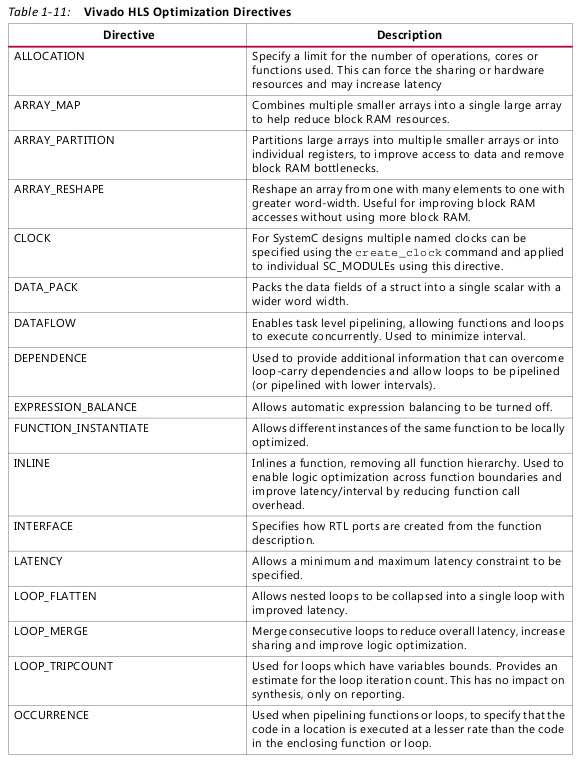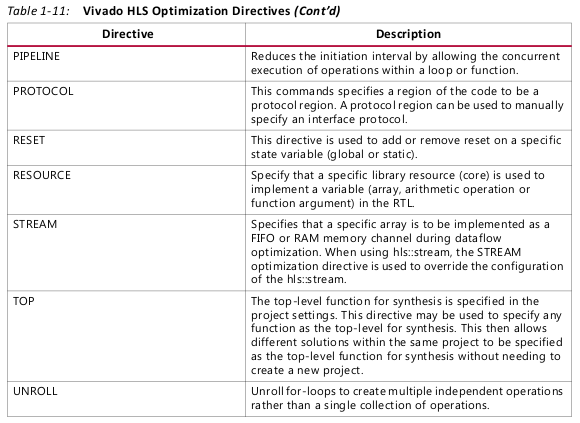HLS Optimization: Latency

Optimization


Using Vivado HLS, you can apply different optimization directives to the design, including:
• Instruct a task to execute in a pipeline, allowing the next execution of the task to begin
before the current execution is complete.
• Specify a latency for the completion of functions, loops, and regions.
• Specify a limit on the number of resources used.
• Override the inherent or implied dependencies in the code and permit specified
operations. For example, if it is acceptable to discard or ignore the initial data values,
such as in a video stream, allow a memory read before write if it results in better
performance.
• Select the I/O protocol to ensure the final design can be connected to other hardware
blocks with the same I/O protocol.
Using Latency Constraints
Merging Sequential Loops to Reduce Latency
Flattening Nested Loops to Improve Latency
Reference:
1.Xilinx UG902




